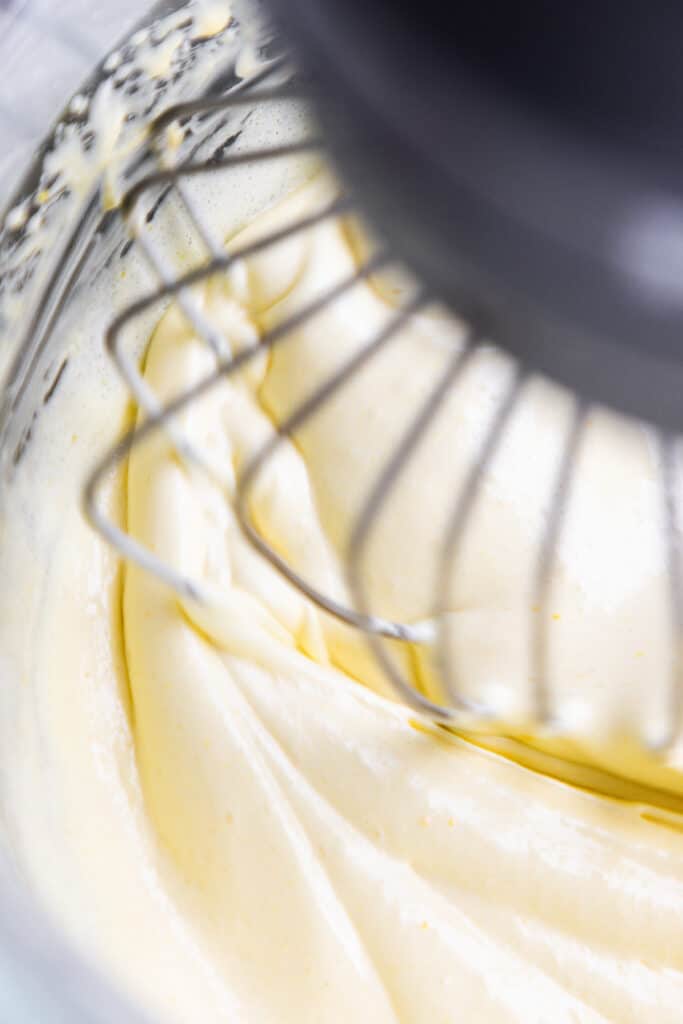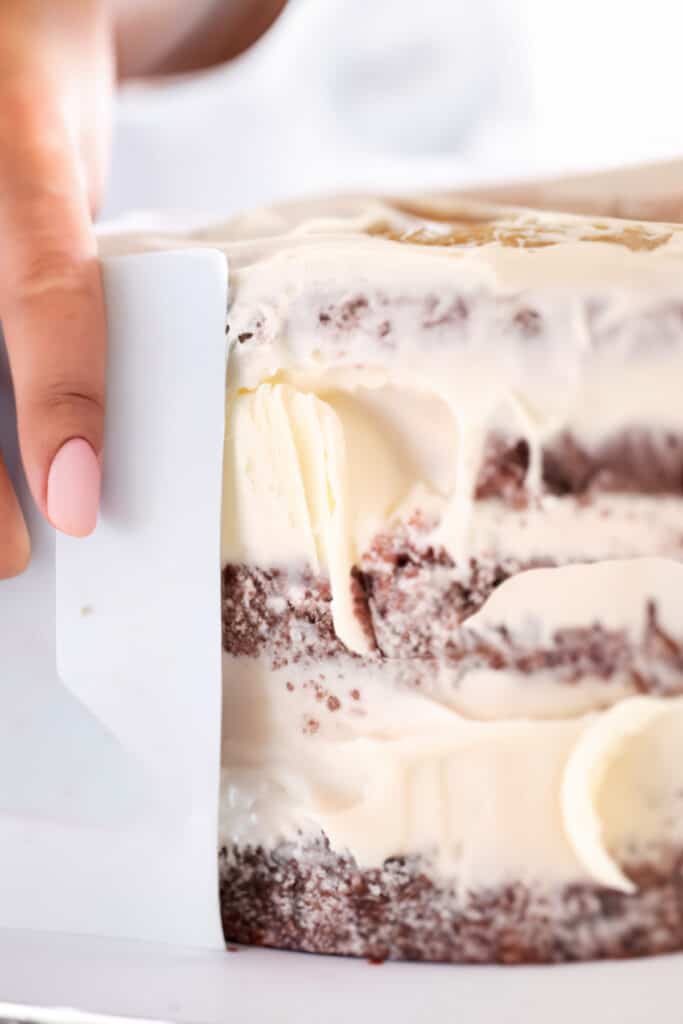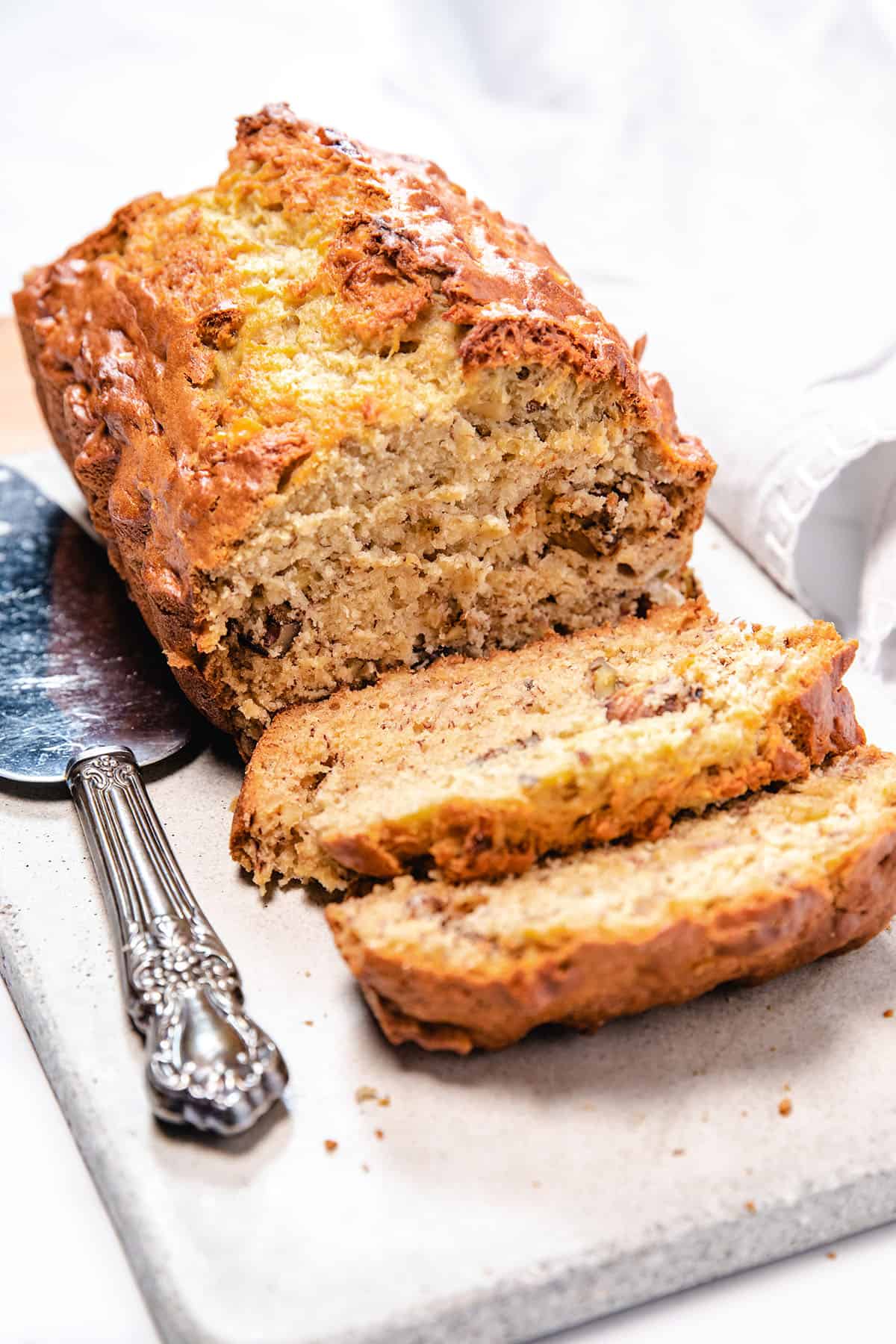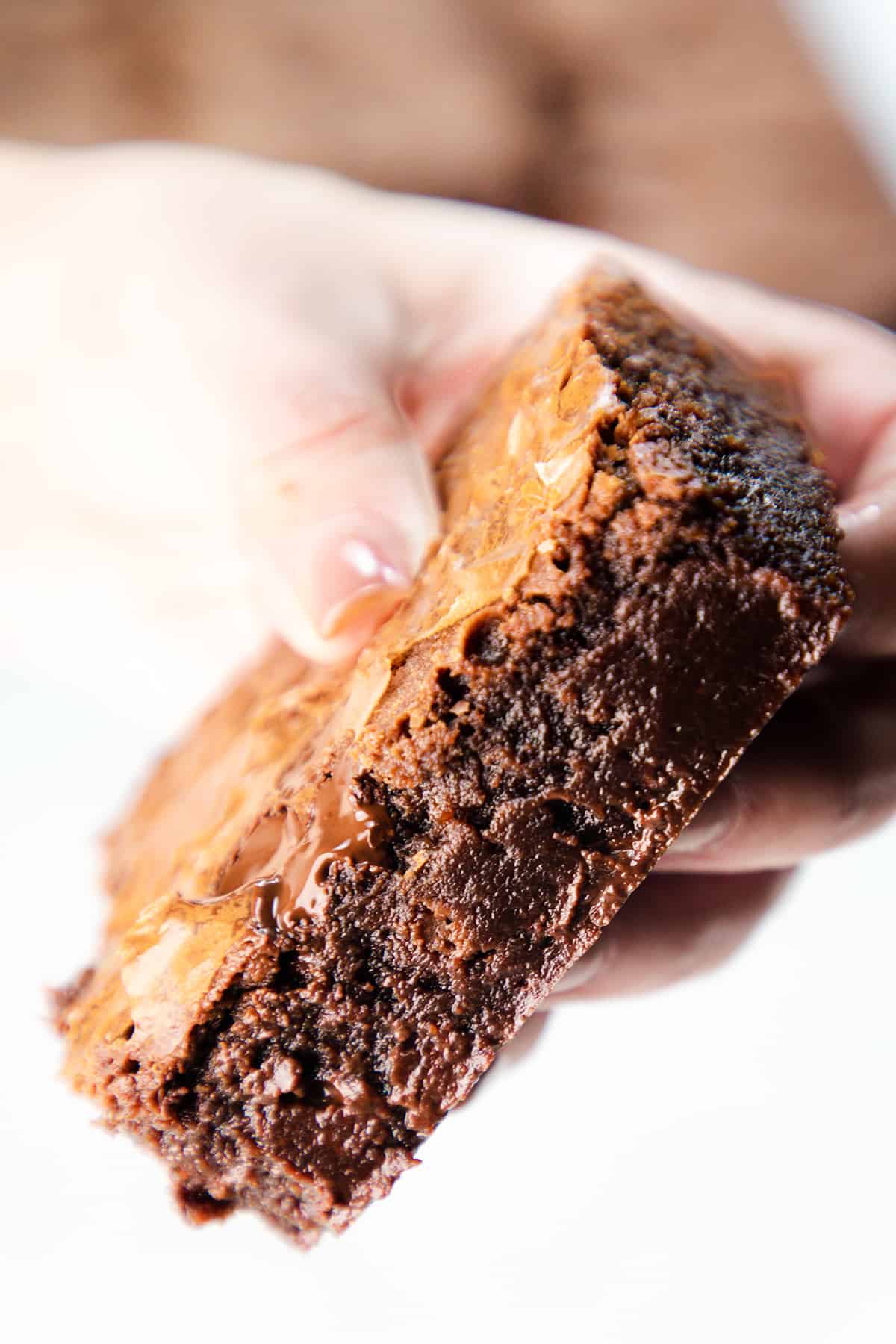
This site runs ads and generates income from affiliate links. Read my disclosure policy.
Indulge in the zesty goodness of Lemon Curd Cake, a fully lemon cake with a luscious lemon curd filling. Perfect for any occasion!

Our Lemon Curd Cake is like a sunny day in dessert form – soft, fluffy cake made with real lemons, filled with lemon curd, and topped with tangy cream cheese frosting and fresh berries. It’s sweet, but not too sweet, with a zingy twist. Every bite is a burst of bright flavors. Trust us, once you try it, you’ll want another slice!
Why This Recipe Works
- Tangy Lemon Curd: The star of this cake is undoubtedly the tangy lemon curd, which adds a burst of bright citrus flavor. Made from freshly squeezed lemon juice, zest, and a touch of sweetness, the curd strikes a perfect balance between tart and sweet.
- Cream Cheese Frosting: Smooth and velvety, the cream cheese frosting complements the lemony layers with its rich and luscious taste. Its decadence pairs beautifully with the zesty notes of the lemon curd.
- Moist and Fluffy Cake: The cake layers are moist, tender, and infused with the essence of lemon, thanks to a combination of buttermilk, lemon juice, and lemon zest. The result is a perfectly balanced cake that’s not overly sweet, making it an ideal treat for any occasion.
- Fresh Berry Decoration offers a vibrant and juicy burst of fruity goodness that complements the lemon flavors splendidly.

Ingredient Notes

- All-Purpose Flour: For the best results, use sifted all-purpose flour. Look for reputable brands that offer a fine texture, ensuring a tender and fluffy cake.
- Buttermilk or Milk: Buttermilk adds a delightful tanginess to the cake. For the creamiest and tangiest outcome, opt for full-fat buttermilk. If you don’t have buttermilk on hand, you can substitute it with milk.
- Eggs: Choose large eggs. Always use fresh eggs at room temperature for the best results.
- Sugar: Granulated or superfine/caster sugar are both good options for this recipe.
- Baking Powder and Baking Soda: Choose reliable double-acting baking powder for a consistent rise and fresh baking soda to enhance tenderness. Find these leavening agents in the baking aisle of most grocery stores.
- Lemon Juice and Zest: Use freshly squeezed lemon juice for the freshest flavor. Large, juicy lemons are your best bet for maximum citrusy goodness.
- Vanilla: Vanilla bean paste or pure vanilla extract offers the richest and most authentic flavor. Look for high-quality brands with no artificial additives.
- Cream Cheese: Softened cream cheese is crucial for achieving a smooth and creamy frosting. Brick-style cream cheese works best in this recipe.
- Powdered Sugar: Opt for sifted powdered sugar to avoid lumps in the frosting. Most grocery stores offer standard powdered sugar in the baking aisle. You can find organic powdered sugar or powdered coconut sugar in specialty stores or health food sections if you prefer a healthier alternative.
- Fresh Berries: Choose ripe and plump fresh berries. Strawberries, blueberries, raspberries, or blackberries work wonderfully.
- Butter: Use unsalted butter for both the cake and the lemon curd filling. Unsalted butter allows you to control the amount of salt in the recipe. If you only have salted butter on hand, reduce the amount of added salt in the recipe accordingly.
- Cornstarch: Cornstarch (also known as cornflour) is a thickening agent for the curd. You can find cornstarch in the baking aisle.
Lemons For Baking

When buying lemons for baking with the zest, be sure to choose unwaxed lemons. If your budget permits, opt for organic lemons, as they tend to be juicier and more flavorful. Check the skin for firmness and vibrant color, indicating they are ripe and full of juice.
Step By Step Instructions
Preparation
Preheat your oven to 325°F (160°C). Line your pans with parchment paper and Grease and flour three 9-inch (20cm) round cake pans.

Zesting Your Lemons
Using the zester or microplane, gently run it across the outer surface of the lemon, applying slight pressure. Grate only the yellow part of the skin, avoiding the white pith beneath, as it is bitter.

Continuously rotate the lemon as you zest, ensuring you collect zest from all sides while avoiding the bitter pith.
When using both the lemon zest and lemon juice, be sure to zest the lemons first. Zesting a whole lemon is much easier than trying to zest it after juicing. When the lemon is whole, it is firmer and more stable, making it simpler to run a zester or microplane over the surface to extract the zest.
Juicing The Lemons
For this recipe (including the curd), you will need approximately six lemons. To juice a lemon, start by choosing a ripe and firm lemon. Roll the lemon on a countertop to release more juice.

Cut the lemon in half and hold one half with the cut side up over a small bowl or dish. Firmly squeeze the lemon, rotating it slightly to extract the juice.
Alternatively, take one lemon half and hold it cut side down over the citrus juicer. Press the lemon down firmly on the reamer or cone of the juicer and twist it back and forth while applying pressure. The juicer will extract the lemon juice and flow it down into the collection reservoir below.

Separating An Egg
For this recipe, you will need to separate 1 large egg. To do this, hold the egg firmly but gently and tap gently on a flat surface like the countertop to create a crack in the shell.

Use both hands to open the egg by pulling the two halves of the shell apart. Be cautious not to drop any shell fragments into the egg.
Over the bowl, carefully transfer the egg yolk back and forth between the two shell halves, allowing the egg whites to drip into the bowl. Keep the yolk intact as you transfer it, and let the egg whites fall into the bowl below.

Once the egg white has mostly separated from the yolk, gently transfer the yolk to a separate clean bowl.
Making The Batter
In a medium-sized bowl, whisk together the sifted all-purpose flour (2½ cups or 300g), baking powder (1 teaspoon), baking soda (¼ teaspoon), and salt (½ teaspoon). This blend of dry ingredients will provide structure and flavor to your cake. Set the mixture aside for now; we’ll incorporate it into the wet ingredients later.

Connect your mixer with the whisk attachment and beat the 4 large eggs with 1½ cups (300g) of granulated sugar on high speed. The goal here is to achieve a pale and fluffy consistency, which typically takes about 5 minutes. This airy mixture will ensure a light and delicate cake texture.

Lower the mixer’s speed and slowly add ¾ cup (80ml) of neutral oil (such as canola oil or vegetable oil).

Then continue with the ¼ cup (60g) of melted butter, ¾ cup (180ml) of buttermilk (or milk), ½ cup (120ml) of freshly squeezed lemon juice, 1 tablespoon (6g) of lemon zest, and 1 teaspoon (5ml) of vanilla. Mix until it’s all combined.

Gradually add the flour mixture you set aside earlier and mix until just combined.

Be cautious not to overmix, which could result in a denser cake. Gently combine the ingredients at this stage and mix just until there’s no more dry flour visible.

Divide the cake batter evenly between the two prepared pans.

Slide the pans into the preheated oven and bake for 25-30 minutes. Keep an eye out for a toothpick inserted into the center, which should come out clean or with just a few crumbs.

Once baked, allow the cakes to cool in the pans for 10 minutes. After this short resting period, transfer them to a wire rack to cool completely. This step ensures the cakes maintain their texture and makes removing them from the pans easier.
Making The Lemon Curd Filling
Whisk together 1½ tablespoons (9g) of finely grated lemon zest, 2 large eggs, 1 egg yolk, ½ cup (120ml) of freshly squeezed lemon juice, and ½ teaspoon (1g) of cornstarch in a medium mixing bowl.

Then melt ½ cup (120g) butter in a medium saucepan over medium heat. Stir in ¾ cup (150g) of sugar and ¼ teaspoon (1.5g) of salt Stir until the butter is melted and the sugar is incorporated. The sugar doesn’t need to be dissolved at this point.

Take a small portion of the warm butter mixture and gradually blend it into the egg mixture, whisking continuously. This process, called tempering, prevents the eggs from curdling. Then, pour this tempered egg mixture back into the saucepan and whisk over medium heat until the curd thickens and gently bubbles, about 8 minutes.

To determine if your mixture is properly cooked, use a spoon to scoop some of it and then run your finger across the back of the spoon. The mixture is ready if your finger leaves a clear path that doesn’t fill back in. However, if the path fills in, then you should continue cooking it for a bit longer.

Strain your luscious lemon curd through a sieve into a clean bowl, ensuring a silky texture without any lumps or zest.

Press plastic wrap directly onto the curd’s surface to avoid forming skin. Allow it to cool to room temperature before refrigerating until thoroughly chilled and thickened.
See our homemade Lemon Curd recipe for more details and tips on making the curd.

Making The Cream Cheese Frosting
In a large mixing bowl, beat 8 oz (225g) softened cream cheese and 1 cup (225g) of butter together using an electric mixer on medium speed. This blending creates a velvety base for your frosting.

Mix in 1 teaspoon (5ml) vanilla and a pinch of salt. Then gradually introduce the sifted powdered sugar (you’ll need about 4 cups or 500g), adding one cup at a time.
Mix on low speed after each addition until the sugar is fully incorporated. This gradual approach prevents clumps and guarantees a smooth frosting.

If the frosting seems too thick or you prefer a softer consistency, you can add a few tablespoons of milk or heavy cream (the equivalent of 45-60ml). Start with one tablespoon at a time, and mix well until you achieve the desired consistency.
Assembling the Cake
Place one of the cake layers on a cake stand or serving plate. Pipe the cream cheese frosting around the edge of the bottom layer. Then fill the center of the piped frosting with lemon curd.

Spread the frosting on the top and then onto the sides of the cake.

For a semi-naked look, use a bench scraper or an offset spatula to gently scrape off some of the frosting around the sides of the cake until you achieve the desired effect.

Decorate the top of the cake as desired with fresh berries, edible flowers, or any other decorations of your choice. This adds a final touch of elegance and flavor.

Once the cake is decorated, refrigerate it for at least 30 minutes to set the frosting before serving.

Recipe Tips
- Read the Recipe: Before you start, carefully read through the entire recipe to understand the steps and ingredients needed.
- Prep Your Ingredients: Measure all your ingredients accurately before you begin to ensure a smooth cooking process.
- Room Temperature Ingredients: Make sure your eggs, butter, and cream cheese are at room temperature. This helps achieve a smoother batter and frosting.
- Sifting Flour: Sift the flour before measuring to ensure it’s light and aerated, leading to a softer cake texture.
- Zest First: Zest the lemons before juicing them. It’s easier to zest a whole lemon than a squeezed one.
- Citrus Zest Technique: Using a microplane grater to avoid the bitter white pith underneath the zest when zesting lemons.
- Juicing Tip: Roll the lemons on the countertop before juicing to make them easier to juice.
- Temper Eggs: Add the warm butter mixture to the egg mixture slowly and whisk continuously to avoid curdling.
- Straining Curd: Strain the lemon curd through a fine mesh sieve to ensure a smooth and velvety texture.
- Even Cake Layers: Tap the filled cake pans gently on the counter to release any air bubbles to ensure even cake layers.
- Cooling Cakes: Allow the cakes to cool in the pans for 10 minutes before transferring them to a wire rack. This prevents them from sticking.
- Test for Doneness: Use a toothpick to test for doneness. It should come out clean or with just a few crumbs attached.
- Softened Cream Cheese and Butter: For the frosting, make sure your cream cheese and butter are fully softened to avoid lumps.
- Gradual Sugar Addition: Add powdered sugar to the frosting gradually to avoid sugar clouds and ensure a smooth mixture.
- Texture Adjustment: If your frosting is too thick, add a little milk or cream a tablespoon at a time until you achieve the desired consistency.
- Frosting Technique: Apply a thin crumb coat layer of frosting before the final layer to lock in any cake crumbs and create a smooth base.
- Decoration Choices: Customize the cake’s appearance with your favorite fruits, berries, edible flowers, or other decorations. Get creative!
- Chill for Setting: Allow the cake to chill in the refrigerator for at least 30 minutes before serving. This helps the frosting set and enhances the flavors.
Storage & Freezing Instructions
Store the assembled cake in the refrigerator for up to 3 days, tightly wrapped in plastic or airtight containers.
Freezing: If possible, freeze the cake layers without the cream cheese frosting. The frosting can become slightly compromised in texture after freezing and thawing.
To freeze the unfrosted cake layers for up to 3 months, tightly wrapped in plastic wrap and foil. Thaw in the refrigerator before frosting.
FAQs
Are lemon curd and lemon creme the same?
Lemon curd and lemon crème are words that people sometimes use to talk about similar lemon-flavored creamy fillings. They’re often used to mean the same thing, but there can be some small differences depending on where you’re talking about them.
What is lemon curd vs custard?
Lemon curd and custard are creamy mixtures, but they have differences. Lemon curd is tangy and made with lemon juice, zest, sugar, eggs, and butter. It’s used in desserts. Custard is more neutral, made with milk, eggs, and sugar, often cooked for a smooth texture. It’s used in various sweets and dishes like pies.
Does lemon curd cake need to be refrigerated?
Yes, lemon curd cake usually needs to be refrigerated. This is because lemon curd contains eggs and butter, which can spoil if left at room temperature for too long. Refrigerating the cake helps keep it fresh and safe to eat.
Does this cake keep well?
Yes, this cake keeps well, especially when stored properly. The lemon curd cake’s components, like the cake layers, lemon curd, and cream cheese frosting, contribute to its overall moisture and flavor. When stored in the refrigerator, covered with plastic wrap, or stored in an airtight container, the cake can maintain its freshness and taste for several days, typically up to 3 to 4 days.
Rate This Recipe

Recipe
Lemon Curd Cake
Ingredients
For the Cake:
- 2½ cups all-purpose flour (sifted)
- 1 teaspoon baking powder
- ¼ teaspoon baking soda
- ½ teaspoon salt
- 4 large eggs
- 1½ cups granulated sugar
- ¾ cup canola oil
- ¼ cup butter (melted)
- ¾ cup buttermilk (or milk)
- ½ cups freshly squeezed lemon juice (from about 3-4 large lemons)
- 1 tablespoon lemon zest
- 1 teaspoon pure vanilla extract
For the Lemon Curd Filling:
- ½ cup butter
- ¾ cup sugar
- ¼ teaspoon salt
- 1½ tablespoons finely grated lemon zest
- 2 large eggs
- 1 egg yolk
- ½ cup fresh lemon juice (from about 2 large lemons)
- ½ teaspoon cornstarch
For the Cream Cheese Frosting:
- 8 oz cream cheese (softened at room temperature)
- 1 cup unsalted butter (softened at room temperature)
- 4 cups powdered sugar (sifted)
- 1 teaspoon pure vanilla extract
- ⅛ teaspoon salt
- 3 tablespoons milk (or heavy cream to adjust consistency if needed)
Decoration:
- Fresh berries
Instructions
- Preheat the oven to 350°F/180°C and grease two 9-inch cake pans.
- In a medium-sized bowl, whisk together the flour, baking powder, baking soda, and salt. Set aside.
- Using a mixer fitted with the whisk attachment, beat together the eggs and sugar on high speed until pale and fluffy, about 5 minutes.
- With the mixer running on low, slowly add the oil. Then continue with the melted butter, buttermilk, lemon juice, zest, and vanilla. Mix until combined.
- Gradually add the flour mixture and mix until just combined, taking care not to overmix.
- Divide the batter evenly between the two prepared pans.
- Bake for 25-30 minutes, or until a toothpick inserted into the center comes out clean or with a few crumbs. Allow to cool in the pans for 10 minutes, then transfer to a wire rack to cool completely.
For the Lemon Curd Filling:
- In a medium saucepan, melt the butter over medium heat with the sugar and salt. Stir until the butter is melted and the sugar is incorporated.
- In a separate bowl, whisk together the lemon zest, eggs, egg yolk, lemon juice, and cornstarch.
- Slowly pour a small amount of the hot butter mixture into the egg mixture, whisking constantly to temper the eggs.
- Pour the tempered egg mixture back into the saucepan and whisk continuously over medium heat until thickened and just starting to bubble, about 8 minutes.
- Strain the curd through a sieve into a clean bowl to remove any lumps or zest. Cover with plastic wrap, placing the wrap directly on the surface to prevent a skin from forming. Allow to cool to room temperature, then refrigerate until fully chilled.
For the Cream Cheese Frosting:
- In a large mixing bowl, beat the softened cream cheese and butter together using an electric mixer on medium speed until they are smooth and creamy. Scrape down the sides of the bowl as needed to ensure even mixing.
- Add the powdered sugar, one cup at a time, to the cream cheese and butter mixture. Continue to beat on low speed after each addition until the sugar is fully incorporated. Scrape down the sides of the bowl occasionally.
- Add the vanilla extract and a pinch of salt to the frosting mixture. Beat again on medium speed until everything is well combined and the frosting has a smooth consistency. At this point, taste the frosting and adjust the sweetness or flavor if necessary.
- If the frosting seems too thick for your liking or if you prefer a softer consistency, you can add a few tablespoons of milk or heavy cream. Start with one tablespoon at a time, and mix well until you achieve the desired consistency.
Assembling the Cake:
- Place one of the cake layers on a cake stand or serving plate. Pipe the cream cheese frosting around the edge of bottom layer. Then fill the center of the piped frosting with the lemon curd. Carefully place the second cake layer on top.
- Apply a thin layer of frosting on the top and around the sides of the cake. This thin layer is what creates the semi-naked look, allowing some of the cake to show through. If you want a more defined semi-naked look, use the offset spatula to gently scrape off some of the frosting around the sides of the cake until you achieve the desired effect.
- You can now decorate the top of the cake as desired with fresh berries, edible flowers, or any other decorations of your choice.
- Once the cake is decorated, refrigerate it for at least 30 minutes to set the frosting before serving.















Leave a Reply